Nature is not a place to visit, it is home
Gary Snyder

“I have a bad feeling about those tomatoes,” says Mr B, coming in from his morning inspection of the greenhouse. So that’s it, then – we’ll be buying the blighters all through the summer because the “bad feeling” is always on target. It’s probably nothing to do with the fact that we went away and neglected the garden for eight days, but more to do with one of the ailments being intoned in a litany around me: “poor growing medium“; “wrong strain“; “pest infestation“…
As usual this is all over my head – or rather, outside my scope of interest. I’ll be rapped over the knuckles for it when he reads this, but some things in life are just…well, dull. And if I find them dull I ignore them completely, preferring to fill my days and nights with things that I enjoy. So I switch off when I hear anyone begin to drone on about football; my grey matter actually congeals when any sort of discussion about car engines threatens, and I bury my head in a good book when a gardening crisis occurs. If my other half wants to grab my attention he needs to talk about something interesting – such as our girls, local events, food (the cooking and eating of it, not its production) – or tempt me into activity by suggesting a day out somewhere (preferably some sort of historical site), a good walk, or a trip away.
Since we gave up paid work we’ve visited several places that we’ve always wanted to see, and we’ve rarely been disappointed. Last year we went to Scotland for the first time and loved it; but there was a huge chunk of the country that we’d missed and so decided to return this year and tackle the NC500 – Vist Scotland’s well publicised ‘North Coast 500’. The route starts at Inverness and runs west through the highlands to Applecross but – typically – we went off-piste. Having spent a night at Carlisle we took the M74 past Glasgow and made our way to Loch Lomond, where annoyingly we just missed the sight of a sea-plane taking off from the surface of the loch. That would have been a treat.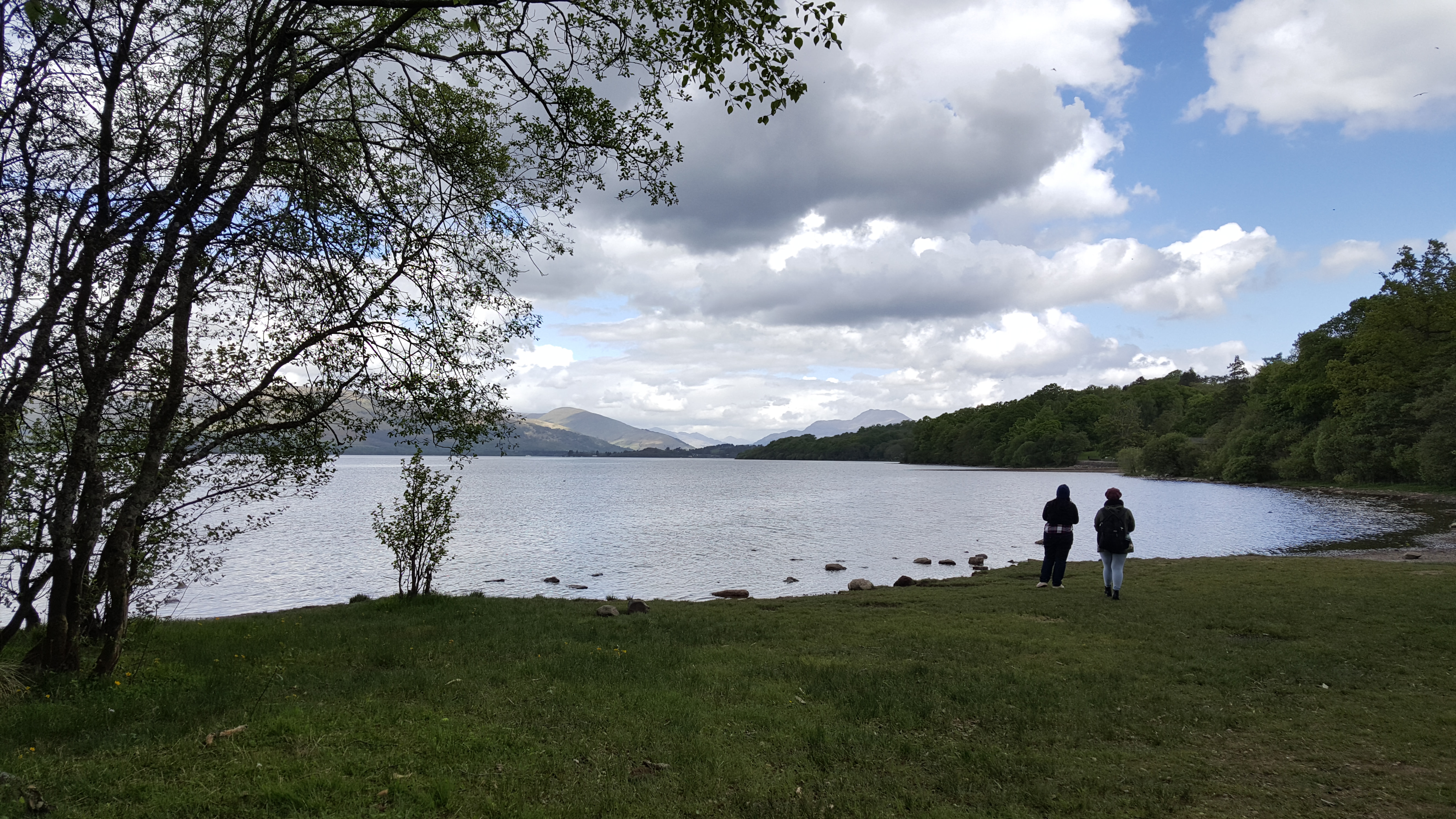 Looking north from Loch Lomond
Looking north from Loch Lomond
We conquered the crushing disappointment and drove northwards past the largest freshwater lake in Britain (by surface area) until we eventually turned west, driving through Rannoch Moore and the Pass of Glencoe. The weather had been inoffensive until now but the mountains soon dictated a change and the darkening skies emphasised the dramatic setting; the mood was no doubt intensified by the fact that we had the soundtrack to Gladiator booming as we belted along the surprisingly busy A82.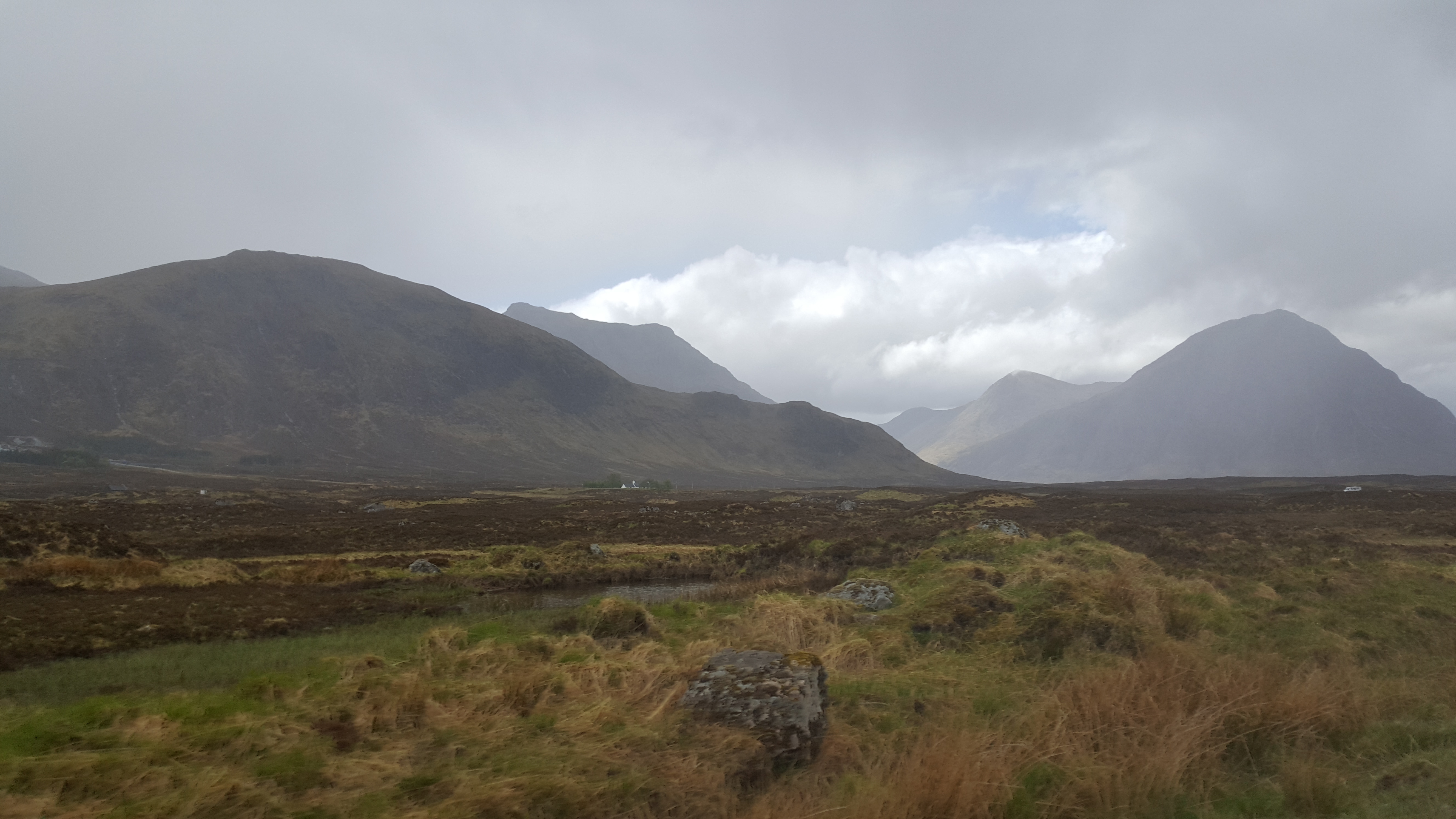
 A helicopter taking off just as we passed by was a distraction – it seemed to be part of an exercise being carried out by emergency services and the mountain rescue team.
A helicopter taking off just as we passed by was a distraction – it seemed to be part of an exercise being carried out by emergency services and the mountain rescue team.
 Once at the village of Glencoe we visited the memorial to the victims of the infamous massacre of 1692, an event that even today casts its shadow across this place
Once at the village of Glencoe we visited the memorial to the victims of the infamous massacre of 1692, an event that even today casts its shadow across this place
Our next stop was the tiny settlement of Corran on the shore of Loch Linnhe, where I’d booked us into the youth hostel for the night. We’d never stayed in a youth hostel before and maybe they’re no longer called that…the label ‘youth‘ seems a little inappropriate! We already knew that this was a really quiet spot with no restaurants in the immediate area, so we’d carted a pile of food along for a cold supper. We also knew that a ferry travelled from Corran across the loch to Ardgour and had planned a picnic in the hostel garden, watching the ferry chugging to and fro across the narrows.
We were perfectly happy with the evening’s planned entertainment although things took a sudden turn for the even-better when Ian, the member of hostel staff who was showing us around, explained that foot passengers travelled free on the ferry and that there was an inn (the only inn for miles around) perched on the opposite shore, right alongside the dock…quay…jetty…whatever. He also warned us that the ferry didn’t run to a timetable, just filled with the twenty-odd vehicles it could carry, made its journey, ejected the vehicles, filled up again and came back; it made its last crossing at ‘about’ 9:20 – 9:30, whenever the crew had decided they’d had enough; if we missed that crossing the taxi-ride around the loch to the hostel would cost around £100. You’ll be unsurprised to find that we crossed back by 7:30, determined not to furnish the local taxi company with our cash! On board the ferry
On board the ferry
 Crossing Loch Linnhe…the inn is the white building on the right. And the sun was back!
Crossing Loch Linnhe…the inn is the white building on the right. And the sun was back!
Once we’d reached the other side we nipped ashore whilst the drivers of the cars/lorries(!)/trucks and bikes were switching on their engines. Reaching Ardgour on the western side of the loch
Reaching Ardgour on the western side of the loch
 A piece of history
A piece of history
 Looking north; Loch Linnhe is a continuation of the rift that forms the Great Glen, connecting the Atlantic Ocean with the North Sea by means of Loch Ness and the Caledonian Canal complex
Looking north; Loch Linnhe is a continuation of the rift that forms the Great Glen, connecting the Atlantic Ocean with the North Sea by means of Loch Ness and the Caledonian Canal complex
 A converted lighthouse on the shore of the loch
A converted lighthouse on the shore of the loch
The good weather didn’t last long and our progress north was dogged by heavy rainclouds. We stoppped briefly at Ullapool, a pretty but tiny port which sees regular ferry traffic to the Western Isles (Outer Hebrides). From there it was just a short hop to our next destination, Lochinver. On the way we spotted this gorgeous remnant of the 15th century, the ruins of Ardvreck Castle on the shore of Loch Assynt.
We stayed at the small fishing-port of Lochinver for three nights, which I promise you is more than enough time to thoroughly explore the area. One of the most rewarding aspects of a road trip is that you get to see the most amazing changes in the landscape, unlike the sudden shift from one type of terrain to another that a plane journey affords. We’d moved from the gentle hills of the lowlands to the green peaks of the Trossachs and then through the majestic Nevis range as we’d travelled further west towards Loch Linnhe. Up here in the far north-west of the country, the highlands were bleak and desolate, rising up out of peat bogs to meet the low clouds.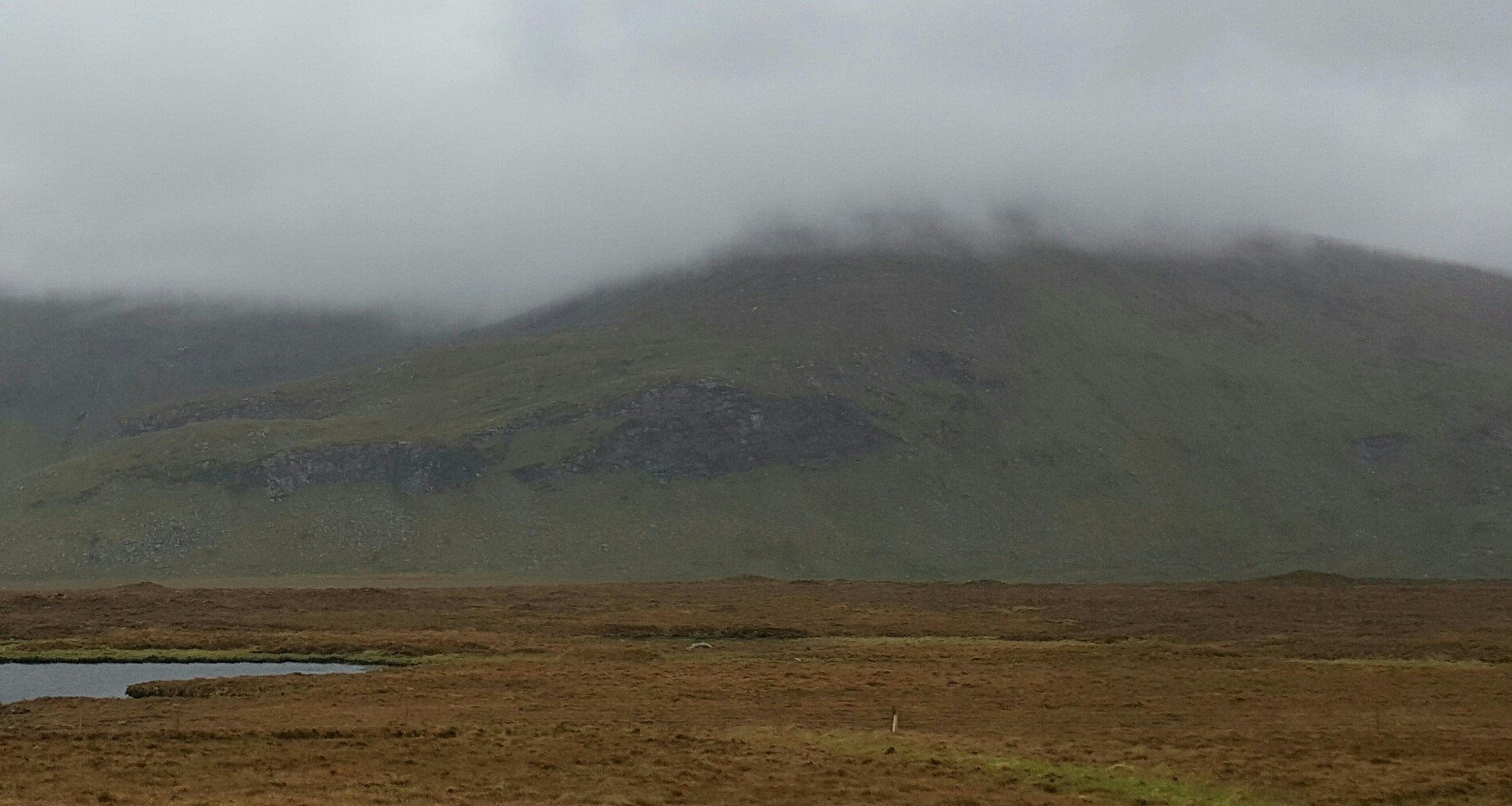
Every now and then we watched in sympathy as we saw yet another cohort of walkers (some of them probably youngsters working for their DOE award) unloaded from a mini-bus, hauling on huge backpacks before setting off into the hostile territory. They looked like groups of hobbits winding their way through the dead marshes. …in the land of Mordor where the shadows lie…
…in the land of Mordor where the shadows lie…
One of the goals of this trip was to find some of the wonderful Scottish beaches that we’d heard about. A complete contrast to the grim interior, they were soft, jewel colours, where blue and green waters washed sand as fine as icing sugar – and we were lucky enough to see a group of seals loitering on some offshore rocks. Just look at these!

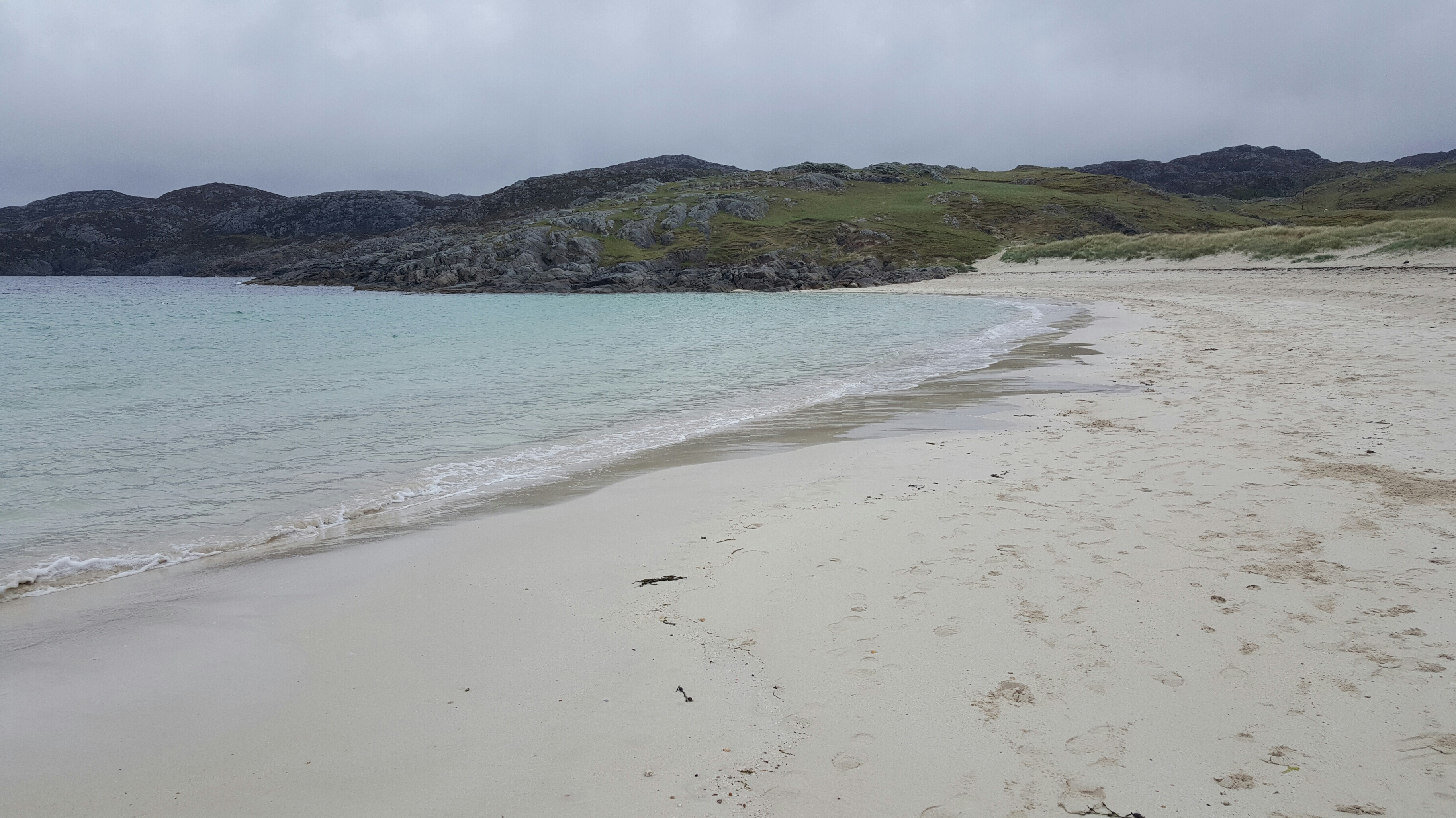
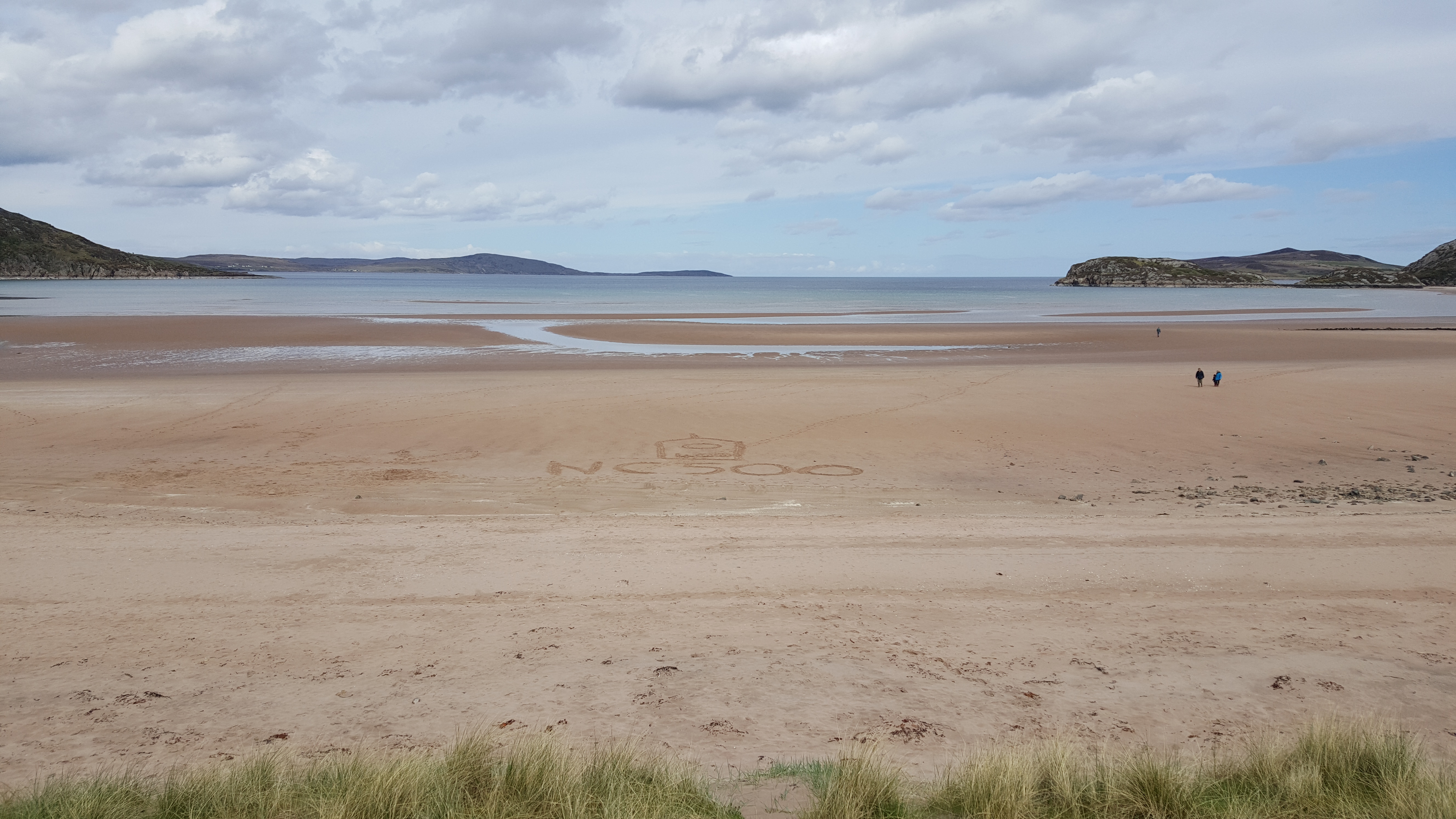

And the seals!
We left Lochinver and the west coast by roads which were single track, punctuated every hundred yards or so with passing places. The sort of roads that you should probably travel on a motor-bike or in an open topped sports car; an Alfa spider, maybe…ok, I do appreciate some things about cars!
When we reached Durness on the north coast we turned east, following the way around inlets and kyles until we reached Bettyhill, where we visited the Strathnaver Museum. This small building, once St Columba’s Church, houses an extraordinary collection of local artefacts. In addition to telling the story of Clan McKay, once rulers of this part of Sutherland, there are pre-Christian items and ancient tomb-stones. The major feature, though, is the large ground-floor room which tells the story of the diabolical Highland Clearances of the early part of the 19th century. You knew you’d get some history – here it comes…
The Countess of Sutherland and her husband, the Marquis of Stafford, owned one and a half million acres of Sutherland and Caithness. Greedy for wealth, they had decided that they would earn more money from rearing sheep than they did in rent from their poor tenants and so they set about ‘clearing’ the land. The men they employed to do this work were the most appalling human beings: William Young, James Loch and Patrick Sellar set about their task with zeal. Tenants were given short notice before being evicted and their homes set ablaze…and of course people died. The monstrous Sellar was actually tried on a charge of culpable homicide but acquitted – no great surprise from an establishment that consisted largely of the aristocracy and with a jury made up of wealthy landowners. He returned to his work, reaping the rewards – by the end of the clearances he, Young and Loch had become rich sheep-farmers.
The evicted population of the northern wilderness were settled in nominated coastal villages and told to become fishermen; little help that they had never fished, that they had nowhere to live and that families had to live in the open air until they had collected enough stones together to build a small home. Threatened with starvation, many of them gave up and moved to towns such as Inverness and Glasgow, and many more emigrated. And while the Sutherlands were not the only landowners who had indulged in this cruelty – clearances had begun as long before as the 1760s – it is their name which is most associated with the practice.
We stayed the night in Bettyhill, relaxing in a comfortable hotel and enjoying a good meal. The hotel had been founded as a coaching inn in 1819, when the clearances were in full sway in the surrounding land; and it was here in this sad place that we woke the following morning to the desperate news of the bombing in Manchester.
There are always monsters.

Tell me about despair, yours, and I will tell you mine.
Meanwhile the world goes on.
Meanwhile the sun and the clear pebbles of the rain
are moving across the landscapes,
Over the prairies and the deep trees, the mountains and the rivers
Mary Oliver


It sounds like you had a fabulous trip – you packed so much in…. Thoroughly enjoyable reading and lovely pictures, thank you….
Oh – and tell Michael not to worry about those tomatoes – there are plenty of weeds in the garden that are edible… as I have been discovering….
Thanks Hazel – I think he’s resigned himself to the tomato situation!
Your writing and beautiful photography makes me want to take to the open road and head for the hills. Thank you for a lovely blog.
Thank you – it’s astonishing what you can produce with a smartphone!
Sounds to have been a near-perfect trip (despite the tomatoes), beautifully told and hence compulsive reading. And your final quote was both moving and somewhat consolatory after recent news.
Thanks. I think it’s a mistake sometimes to say too much on these awful events, especially when there are so many eloquent writers out there. I really like Mary Oliver – she has a way of getting to the heart of things